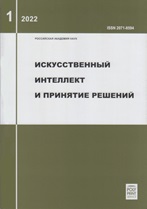|
System, evolutionary, cognitive modeling
Mathematical aspects of the concept of influence in the cognitive simulations
V. P. Osipov, Yu. G. Rykov, B. N. Chetverushkin
Keldysh Institute of Applied Mathematics of Russian Academy of Sciences, Moscow, Russia
Abstract:
Mathematical aspects of algorithms for assessing the influence of external factors in the cognitive modeling of complex systems are considered. Systems are represented in the form of directed graphs, the vertices and edges of which are assigned weights. Traditionally, the influence of external factors (input nodes) to the state (weight) of system elements (internal nodes) are computed successively for the set of all paths using the method of additive convolution of the input vertices and the corresponding edges. In this paper, for each internal vertex, it is proposed to define in a new way such influence as a partial derivative of the functional dependence corresponding to the graph. Formulas for calculating the influence coefficient are given, taking into account the structure of the graph, the partitions into cycles and the paths between the corresponding vertices. Using the example of a simple cognitive model for assessing the impact on the population and production of a certain viral infection and measures to counter it, the results of the proposed method and the traditional approach are compared. The specified definition of the concept of influence is also valid in the case of using more complex, nonlinear formulas, as well as when using fuzzy characteristics of vertices and edges.
Keywords:
complex system, cognitive simulation, weighted digraph, additive convolution, graph partitioning, paths in a graph.
Citation:
V. P. Osipov, Yu. G. Rykov, B. N. Chetverushkin, “Mathematical aspects of the concept of influence in the cognitive simulations”, Artificial Intelligence and Decision Making, 2021, no. 2, 3–10; Scientific and Technical Information Processing, 49:5 (2022), 350–355
Linking options:
https://www.mathnet.ru/eng/iipr96 https://www.mathnet.ru/eng/iipr/y2021/i2/p3
|

| Statistics & downloads: |
| Abstract page: | 65 | | Full-text PDF : | 19 | | References: | 1 |
|




 Contact us:
Contact us: Terms of Use
Terms of Use
 Registration to the website
Registration to the website Logotypes
Logotypes








 Citation in format
Citation in format 